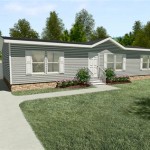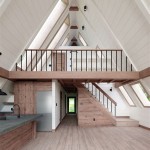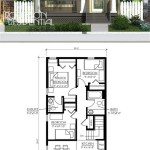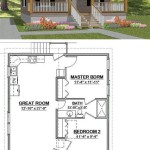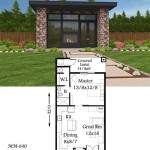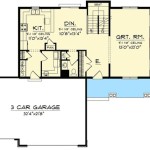Farm house floor plans are architectural blueprints that outline the layout and design of a house primarily intended for rural or agricultural settings. These plans typically incorporate features that cater to the specific needs and requirements of farmers and their families.
Farm houses are often characterized by their spaciousness, practicality, and durability. They may include multiple bedrooms, bathrooms, and living areas to accommodate large families and accommodate guests. Furthermore, farm house floor plans often incorporate features such as mudrooms, pantries, and attached garages or barns to facilitate the storage and organization of farming equipment and supplies.
In the following sections, we will delve into the various aspects of farm house floor plans, exploring the key design considerations, popular room layouts, and essential features that make these homes functional and comfortable.
Farm house floor plans prioritize functionality and comfort for rural living.
- Spacious layouts
- Multiple bedrooms and bathrooms
- Mudrooms for storage
- Attached garages or barns
- Open floor plans
- Large kitchens with pantries
- Durable materials
- Porches and outdoor spaces
- Energy efficiency
- Customizable designs
These elements ensure that farm houses are both practical and comfortable, meeting the unique needs of agricultural families.
Spacious layouts
Spacious layouts are a hallmark of farm house floor plans, providing ample room for families to live and work comfortably. These layouts often feature open floor plans that connect the kitchen, dining room, and living room, creating a sense of spaciousness and togetherness. Large windows and high ceilings further contribute to the feeling of openness and airiness.
Farm house floor plans also prioritize the creation of multiple living areas, providing dedicated spaces for relaxation, entertainment, and work. Family rooms, dens, and home offices are common features, allowing for privacy and flexibility. Additionally, mudrooms and laundry rooms are often incorporated into the design, providing convenient and functional spaces for managing outdoor gear and household chores.
The bedrooms in farm houses are typically spacious and well-appointed, offering ample room for rest and relaxation. Master suites often include walk-in closets and en-suite bathrooms, providing a luxurious and private retreat for the homeowners.
Overall, the spacious layouts of farm house floor plans are designed to meet the needs of growing families and accommodate the demands of rural living. These layouts provide ample room for living, working, and entertaining, while also ensuring privacy and comfort for all occupants.
Multiple bedrooms and bathrooms
Farm house floor plans typically include multiple bedrooms and bathrooms to accommodate the needs of growing families and extended stays from guests. These bedrooms and bathrooms are designed to provide privacy, comfort, and functionality.
- Multiple bedrooms:
Farm house floor plans often include three or more bedrooms to provide ample space for family members and guests. The bedrooms are typically spacious and well-appointed, offering comfortable and private retreats. Master bedrooms often feature walk-in closets and en-suite bathrooms, providing a luxurious and private oasis for the homeowners. - Guest rooms:
Many farm house floor plans also include dedicated guest rooms to accommodate visiting family and friends. These guest rooms are typically located near the main living areas but offer privacy and comfort for guests. They may include features such as en-suite bathrooms and walk-in closets. - Multiple bathrooms:
Farm house floor plans often include multiple bathrooms to provide convenience and privacy for all occupants. The main bathroom is typically located near the bedrooms and includes a bathtub, shower, and toilet. Additional bathrooms may be located near the living areas or mudroom for added convenience. - Powder rooms:
Some farm house floor plans also include a powder room, or half-bath, located on the main level of the home. Powder rooms typically include a toilet and sink and provide convenience for guests and family members without having to access the main bathroom.
Overall, the multiple bedrooms and bathrooms in farm house floor plans are designed to meet the needs of growing families and provide comfortable and private spaces for both family members and guests.
Mudrooms for storage
Mudrooms are essential features in farm house floor plans, providing dedicated spaces for storing and organizing outdoor gear, clothing, and footwear. These mudrooms serve as a buffer zone between the outdoors and the main living areas of the home, helping to keep the house clean and organized.
- Designated storage areas:
Mudrooms typically include designated storage areas for a variety of items, such as coats, hats, boots, umbrellas, and backpacks. These storage areas may include hooks, shelves, cubbies, and benches to keep items organized and easily accessible. - Durable materials:
Mudrooms are often constructed using durable materials that can withstand the wear and tear of outdoor activities. These materials may include tile, linoleum, or hardwood flooring, which are easy to clean and maintain. Walls may be painted with moisture-resistant paint or covered with wainscoting to protect them from dirt and moisture. - Easy access to outdoors:
Mudrooms are typically located near an exterior door, providing easy access to the outdoors. This allows family members and guests to enter and exit the home without tracking dirt and mud into the main living areas. - Additional features:
Some mudrooms may also include additional features, such as built-in benches for putting on and taking off shoes, sinks for washing hands and cleaning up, and even washer and dryer hookups for added convenience.
Overall, mudrooms in farm house floor plans provide essential storage and organization for outdoor gear and clothing, helping to keep the home clean and organized while providing a convenient and functional space for transitioning between the outdoors and the indoors.
Attached garages or barns
Attached garages or barns are common features in farm house floor plans, providing convenient and secure storage for vehicles, equipment, and other farming essentials.
- Vehicle storage:
Attached garages provide secure and protected storage for vehicles, such as cars, trucks, and tractors. This protects vehicles from the elements, theft, and damage, and it also provides a convenient and dry place to load and unload. - Equipment storage:
Attached barns or garages can provide ample space for storing farming equipment, such as tractors, plows, planters, and other machinery. This keeps equipment organized, protected from the elements, and easily accessible when needed. - Workshop space:
Attached garages or barns can also serve as workshop spaces for repairs, maintenance, and projects. This provides a dedicated and well-equipped area for working on vehicles, equipment, or other projects. - Additional storage:
Attached garages or barns can also provide additional storage space for a variety of items, such as tools, supplies, firewood, and seasonal decorations. This helps to keep the main living areas of the home organized and clutter-free.
Overall, attached garages or barns are valuable additions to farm house floor plans, providing convenient and secure storage for vehicles, equipment, and other essential items. They also provide additional workspace and storage, making them essential for the functionality and efficiency of farm life.
Open floor plans
Open floor plans are a popular feature in farm house floor plans, creating a spacious and inviting living environment. These plans eliminate walls between the kitchen, dining room, and living room, resulting in a large, open space that fosters a sense of togetherness and connectivity.
Open floor plans offer several advantages for farm families. First, they promote interaction and communication among family members, as everyone can easily see and talk to each other while engaged in different activities. This is especially beneficial for families with young children, as parents can keep an eye on their kids while cooking or cleaning.
Second, open floor plans create a more spacious and airy feeling, making the home seem larger than it actually is. This is especially important in farm houses, which often have large families and frequent guests. The open layout allows for easy flow of traffic and provides ample space for entertaining and gatherings.
Third, open floor plans allow for more natural light to enter the home, creating a brighter and more inviting atmosphere. Large windows and high ceilings are often incorporated into these plans to maximize natural light and create a connection to the outdoors.
Large kitchens with pantries
Farm house floor plans typically feature large kitchens with pantries to accommodate the needs of busy families and frequent entertaining. These kitchens are designed to be functional, efficient, and inviting, providing ample space for cooking, baking, and gathering.
One of the key features of farm house kitchens is their size. These kitchens are often the heart of the home, serving as a gathering place for family and friends. They offer plenty of counter space for meal preparation, large islands for food prep and entertaining, and spacious dining areas for family meals and special occasions.
Pantries are another essential feature of farm house kitchens. These pantries provide ample storage space for food, appliances, and other kitchen essentials. They are often designed with adjustable shelves and drawers to maximize storage capacity and organization. Some pantries may even include additional features, such as built-in wine racks or coffee stations, to enhance functionality and convenience.
In addition to size and storage, farm house kitchens also prioritize natural light and ventilation. Large windows and skylights are often incorporated into the design to create a bright and airy atmosphere. These windows also provide views of the surrounding landscape, connecting the kitchen to the outdoors and bringing the beauty of nature inside.
Overall, large kitchens with pantries are essential elements of farm house floor plans. These kitchens provide ample space for cooking, baking, and gathering, while also offering convenient storage solutions and plenty of natural light. They are designed to be both functional and inviting, making them the heart of the home for farm families.
Durable materials
Farm house floor plans prioritize the use of durable materials to withstand the rigors of rural living and farming activities. These materials are chosen for their resilience, longevity, and ability to endure the wear and tear of daily life on a farm.
- Hardwood flooring: Hardwood flooring is a popular choice for farm houses due to its durability and timeless appeal. It can withstand heavy foot traffic, scratches, and spills, making it ideal for busy families and active households. Hardwood floors are also relatively easy to clean and maintain, contributing to the overall functionality of the home.
- Tile flooring: Tile flooring is another durable option for farm houses, especially in high-traffic areas such as kitchens, bathrooms, and mudrooms. Tile is resistant to moisture, stains, and scratches, making it a practical choice for homes with children and pets. It is also easy to clean and maintain, ensuring a hygienic and low-maintenance living environment.
- Laminate flooring: Laminate flooring is a cost-effective alternative to hardwood and tile that offers similar durability and functionality. It is resistant to scratches, fading, and moisture, making it a suitable choice for busy families and active households. Laminate flooring is also easy to install and maintain, contributing to the overall practicality of the home.
- Vinyl flooring: Vinyl flooring is a versatile and durable option that is available in a wide range of styles and colors. It is resistant to moisture, stains, and scratches, making it ideal for areas prone to spills and heavy foot traffic. Vinyl flooring is also easy to clean and maintain, ensuring a hygienic and low-maintenance living environment.
In addition to these flooring options, farm house floor plans often incorporate durable materials in other areas of the home, such as countertops, cabinetry, and hardware. These materials are chosen for their ability to withstand everyday use and maintain their appearance over time, ensuring that the home remains both functional and aesthetically pleasing for years to come.
Porches and outdoor spaces
Porches and outdoor spaces are integral to farm house floor plans, providing seamless transitions between indoor and outdoor living. These spaces extend the living areas of the home, creating inviting and functional areas for relaxation, entertainment, and connection with nature.
- Expansive porches: Farm house floor plans often feature expansive porches that wrap around the home, providing ample space for outdoor seating and gatherings. These porches offer shaded areas for relaxation, protection from the elements, and panoramic views of the surrounding landscape.
- Screened-in porches: Screened-in porches are popular additions to farm house floor plans, creating a comfortable and insect-free environment for enjoying the outdoors. These porches provide a protected space for dining, reading, or simply relaxing while surrounded by nature.
- Outdoor kitchens and dining areas: Many farm house floor plans incorporate outdoor kitchens and dining areas, extending the functionality of the home into the outdoors. These spaces feature built-in grills, refrigerators, and seating areas, allowing for seamless outdoor entertaining and dining experiences.
- Fire pits and gathering areas: Fire pits and gathering areas are common features in farm house outdoor spaces, providing a cozy and inviting spot for relaxation and socializing. These areas offer a sense of warmth and ambiance, creating a perfect setting for evening gatherings and storytelling.
Overall, porches and outdoor spaces are essential elements of farm house floor plans, enhancing the overall livability and enjoyment of the home. These spaces provide seamless connections to the outdoors, creating inviting and functional areas for relaxation, entertainment, and connection with nature.
Energy efficiency
Farm house floor plans prioritize energy efficiency to minimize environmental impact and reduce energy costs. Sustainable design principles are incorporated to optimize energy consumption and create comfortable and eco-friendly living environments.
- Insulation:
Proper insulation in walls, ceilings, and floors is crucial for energy efficiency in farm houses. It helps regulate indoor temperatures, reducing the need for excessive heating or cooling. Insulation materials such as fiberglass, cellulose, or spray foam are commonly used to minimize heat loss and improve overall energy performance.
- Energy-efficient windows and doors:
Windows and doors are major sources of energy loss in homes. Farm house floor plans incorporate energy-efficient windows and doors with double or triple glazing, low-emissivity coatings, and tight seals. These features help reduce heat transfer and improve insulation, contributing to energy savings and a more comfortable indoor environment.
- Efficient appliances and lighting:
Energy-efficient appliances and lighting fixtures are essential for reducing energy consumption in farm houses. Look for appliances with Energy Star ratings, which indicate that they meet strict energy efficiency standards. LED and CFL bulbs are energy-efficient lighting options that consume less energy and last longer than traditional incandescent bulbs.
- Solar panels and renewable energy:
Incorporating solar panels into farm house floor plans is a sustainable way to generate renewable energy. These panels convert sunlight into electricity, reducing reliance on non-renewable energy sources and potentially lowering energy bills. Additionally, some farm houses utilize geothermal heating and cooling systems, which harness the earth’s natural temperature to regulate indoor temperatures efficiently.
By implementing these energy-efficient measures, farm house floor plans contribute to a more sustainable and cost-effective living environment. These features not only reduce energy consumption and environmental impact but also enhance the overall comfort and well-being of the occupants.
Customizable designs
Farm house floor plans offer a high level of customization to meet the unique needs and preferences of each family. Homeowners can work with architects and builders to tailor their home’s layout, size, and features to suit their specific lifestyle and requirements.
- Flexible room configurations:
Farm house floor plans can be customized to accommodate different room configurations. Whether you prefer an open floor plan with seamless transitions between living areas or a more traditional layout with separate rooms, the design can be tailored to your preferences. The number and size of bedrooms, bathrooms, and other rooms can also be adjusted to suit your family’s needs.
- Personalized exterior designs:
The exterior of your farm house can be customized to reflect your personal style and complement the surrounding landscape. Choose from a range of architectural styles, such as traditional farmhouse, modern farmhouse, or rustic farmhouse. You can also select exterior materials, colors, and finishes that harmonize with your surroundings and create a cohesive overall design.
- Unique interior features:
Farm house floor plans can incorporate unique interior features that add character and functionality to your home. From built-in bookshelves and window seats to custom cabinetry and fireplaces, these features can be tailored to your specific tastes and needs. You can also choose from a variety of flooring, wall treatments, and lighting fixtures to create a personalized and inviting interior space.
- Sustainable design options:
For homeowners who prioritize sustainability, farm house floor plans can be customized to incorporate eco-friendly features. These features may include energy-efficient appliances, solar panels, rainwater harvesting systems, and sustainable building materials. By incorporating sustainable design principles, you can create a home that is not only comfortable and stylish but also environmentally responsible.
The customizable nature of farm house floor plans allows you to create a home that is tailored to your unique lifestyle, preferences, and values. Whether you dream of a cozy and traditional farmhouse or a modern and energy-efficient one, the possibilities are endless.










Related Posts

